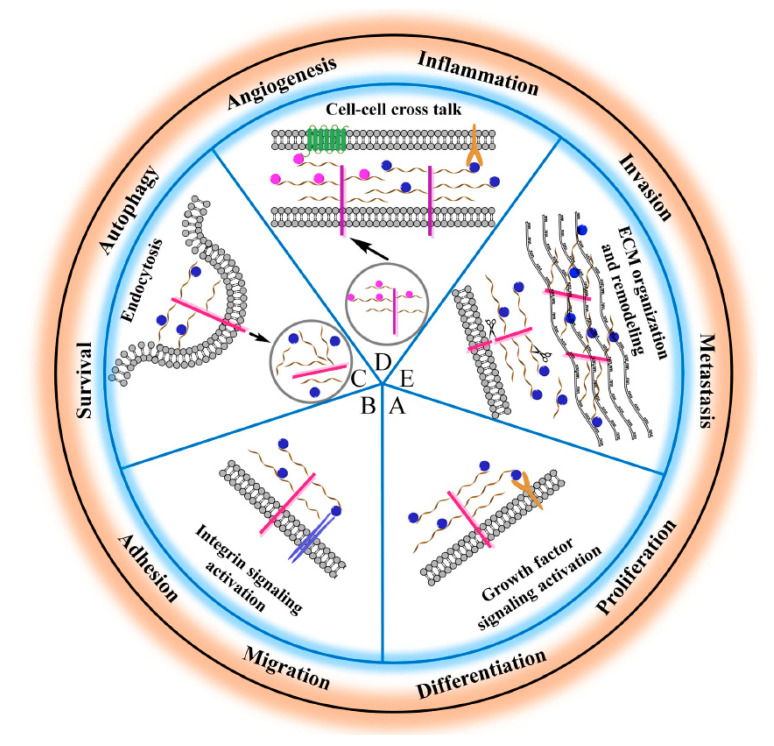Figure 1.
Schematic representation of the main HSPG functions relevant to cancer cell biology. (A,D) HSPGs serve as a signaling co-receptor for growth factor activity, allowing a proper presentation of them to their cognate receptors, on the same or adjacent cells. In panel D, transcellular transport of a ligand (i.e., chemokine) bound to HS chains and its presentation at the cell surface is also shown. (B,D) HGPGs bind integrins modulating their downstream signaling that regulates cytoskeleton organization as well as cell adhesion, spreading and sensing mechanical stress. (C) HSPGs act as endocytic receptors and undergo constitutive as well as ligand-induced endocytosis: exosomes, cell-penetrating peptides, polycation–nucleic acid complexes, lipoproteins, growth factors, and morphogens enter cells through this mechanism. Internalized cargo can be sorted for lysosomal degradation, escape into the cytosol, or recycle back to the plasma membrane. (E) HSPGs are critical determinants of extracellular matrix (ECM) assembly and remodeling. If the HSPGs perlecan, agrin, and collagen type XVIII are directly secreted in the ECM, cell surface-tethered HSPGs (syndecans and glypicans) undergo proteolytic cleavage of their ectodomains or to cleavage of HS chains by heparanases and their truncated forms can be distributed in the ECM. Here, HSPGs act as a reservoir of growth factors and supply them to target cells when needed. Otherwise, they may act as a barrier for growth factors, by preventing their passive diffusion over longer distances, instead of confining them to the vicinity of producing cells. Overall, HSPGs control fundamental cellular processes (i.e., cell adhesion, migration, etc.) whose dysregulation underlies tumor development and progression.

